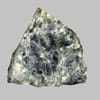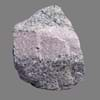Definition
Anorthosite is a granular igneous rock composed largely of labradorite or plagioclase
During the impact melted material forming a breccia containing glass and crystal or lithic fragments together form Suevite rock.
Origin
Unknown
Canada, Germany
Discoverer
Unknown
Unknown
Etymology
From French anorthose plagioclase + -ite1
No etymologies found
Class
Igneous Rocks
Metamorphic Rocks
Sub-Class
Durable Rock, Medium Hardness Rock
Durable Rock, Medium Hardness Rock
Group
Plutonic
Not Applicable
Other Categories
Coarse Grained Rock, Opaque Rock
Coarse Grained Rock, Opaque Rock
Texture
Foliated, Glassy
Earthy
Color
Black, Bluish - Grey, Brown, Green, Grey, Light Greenish Grey, Pink, White
Black, Brown, Green, Grey, Pink
Durability
Durable
Durable
Appearance
Layered, Banded, Veined and Shiny
Banded
Interior Uses
Decorative Aggregates, Floor Tiles, Homes, Interior Decoration
Decorative Aggregates, Homes, Interior Decoration
Exterior Uses
As Building Stone, As Facing Stone, Garden Decoration
As Building Stone, As Facing Stone, Garden Decoration, Office Buildings
Other Architectural Uses
Curbing
Curbing
Construction Industry
As Dimension Stone, Cement Manufacture, for Road Aggregate
As Dimension Stone, Cement Manufacture, for Road Aggregate, Making natural cement, Manufacture of Magnesium and Dolomite Refractories
Medical Industry
Not Available
Not Applicable
Antiquity Uses
Artifacts, Sculpture, Small Figurines
Artifacts, Monuments, Sculpture
Commercial Uses
Creating Artwork, Curling
As a Feed Additive for Livestock, Gemstone, Metallurgical Flux, Source of Magnesia (MgO)
Types
Proterozoic Anorthosite and Archean Anorthosite
Phyllosilicates, Calcite
Features
Generally rough to touch, Is one of the oldest rock
Host Rock for Lead
Archaeological Significance
Monuments
Not Yet Used
Used
Famous Monuments
Not Applicable
Not Available
Famous Sculptures
Not Applicable
Not Available
Pictographs
Not Used
Used
Petroglyphs
Not Used
Used
Formation
Anorthosite is a phaneritic, intrusive igneous rock which is characterized by a predominance of plagioclase feldspar which is almost 90–100%, and a minimal mafic component.
Suevite is a metamorphic rock consisting partly of melted material, typically forming a breccia containing glass and crystal or lithic fragments, formed during an impact event.
Mineral Content
Amphibole, Clinopyroxene, Ilmenite, Magnetite, Olivine, Orthopyroxene
Coesite, Quartz, Stishovite
Compound Content
Ca, CaO, Chromium(III) Oxide, MgO, Sulfur Trioxide
CaO, Carbon Dioxide, MgO
Types of Metamorphism
Cataclastic Metamorphism, Contact Metamorphism
Burial Metamorphism, Cataclastic Metamorphism, Contact Metamorphism, Hydrothermal Metamorphism, Impact Metamorphism, Regional Metamorphism
Types of Weathering
Biological Weathering
Not Applicable
Types of Erosion
Chemical Erosion, Wind Erosion
Not Applicable
Grain Size
Coarse Grained
Coarse Grained
Fracture
Irregular
Uneven
Streak
White
Light to dark brown
Porosity
Less Porous
Less Porous
Luster
Pearly to Subvitreous
Earthy
Cleavage
Not Available
Not Available
Toughness
Not Available
Not Available
Specific Gravity
2.62-2.82
2.86
Transparency
Translucent
Opaque
Density
2.7-4 g/cm3
2.8-2.9 g/cm3
Resistance
Heat Resistant, Impact Resistant, Pressure Resistant, Scratch Resistant, Wear Resistant
Heat Resistant
Deposits in Eastern Continents
Asia
Not Available
Not Available
Africa
Not Available
Not Available
Europe
Bulgaria, France, Germany, Greece, Hungary, Italy, Latvia, Lithuania, Malta, Poland, Portugal, Romania, Slovenia, Spain, Sweden, The Czech Republic
England, France, Germany, Great Britain, Netherlands, Sweden, Switzerland, United Kingdom
Others
Not Available
Not Available
Deposits in Western Continents
North America
Canada
Not Available
South America
Bolivia, Colombia
Not Available
Deposits in Oceania Continent
Australia
Central Australia, South Australia, Western Australia
Not Available
All about Anorthosite and Suevite Properties
Know all about Anorthosite and Suevite properties here. All properties of rocks are important as they define the type of rock and its application. Anorthosite belongs to Igneous Rocks while Suevite belongs to Metamorphic Rocks.Texture of Anorthosite is Foliated, Glassy whereas that of Suevite is Earthy. Anorthosite appears Layered, Banded, Veined and Shiny and Suevite appears Banded. The luster of Anorthosite is pearly to subvitreous while that of Suevite is earthy. Anorthosite and Suevite are available in black, bluish - grey, brown, green, grey, light greenish grey, pink, white colors. The commercial uses of Anorthosite are creating artwork, curling and that of Suevite are as a feed additive for livestock, gemstone, metallurgical flux, source of magnesia (mgo).










